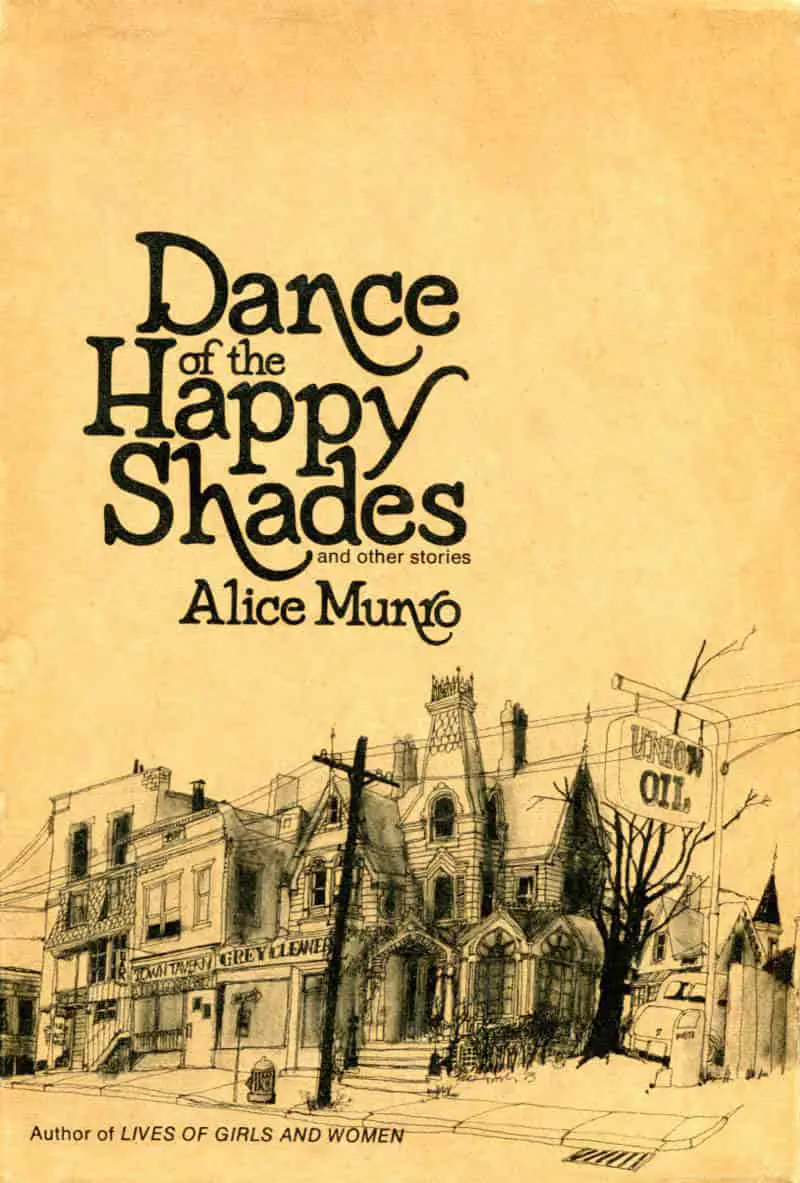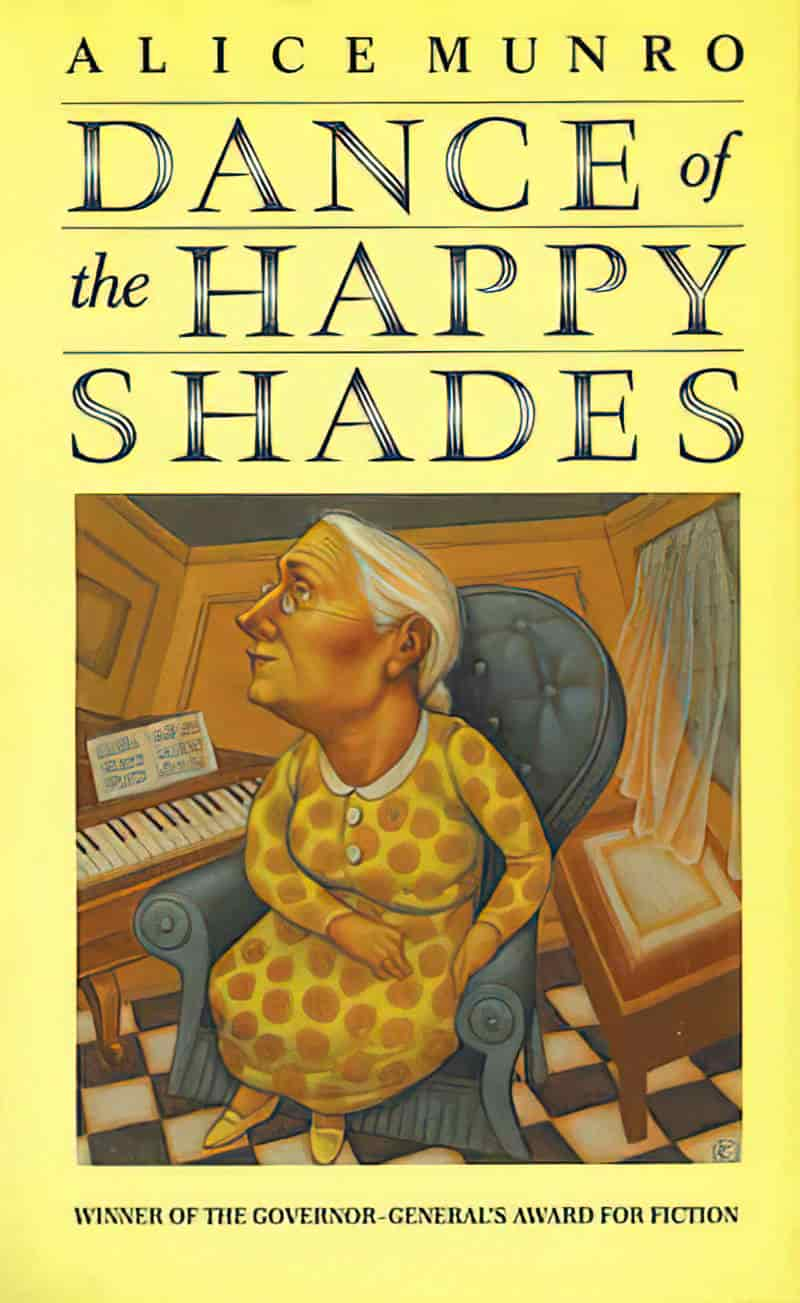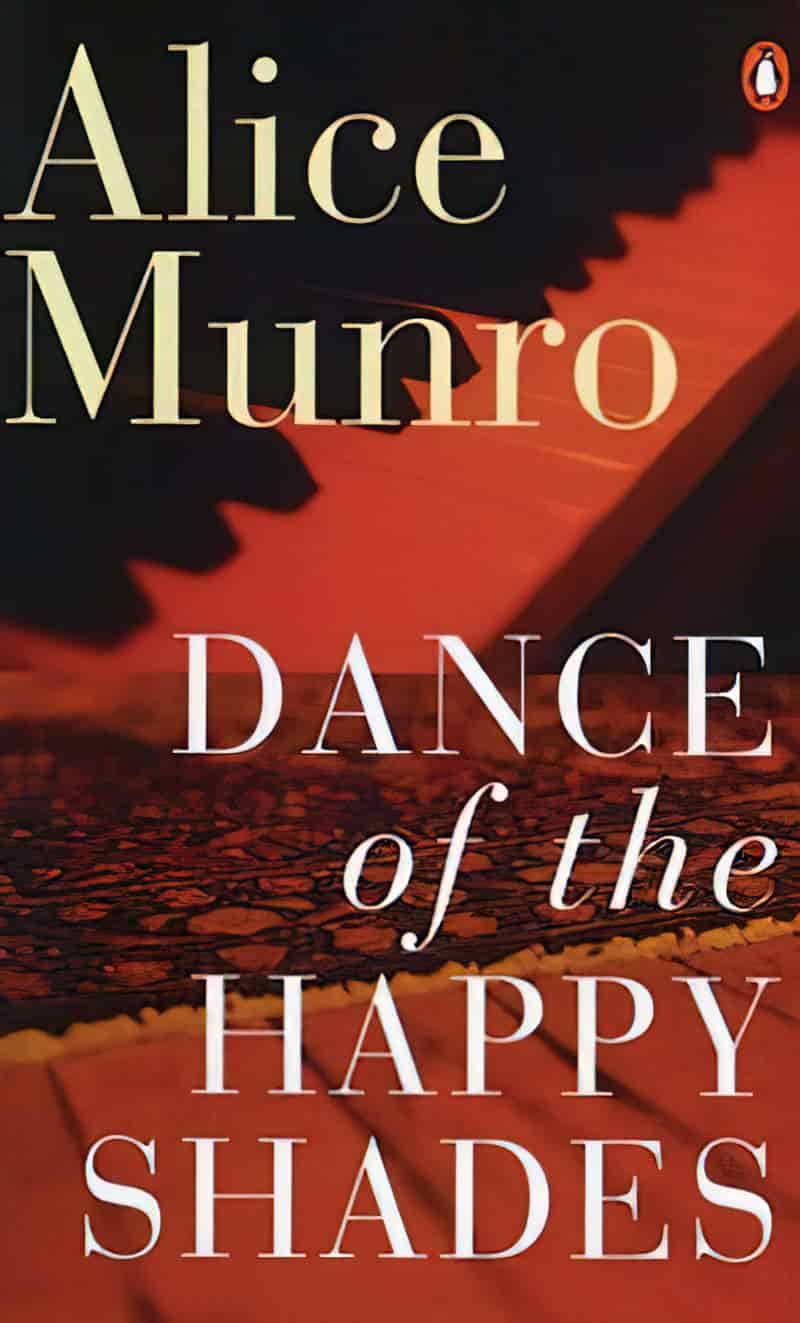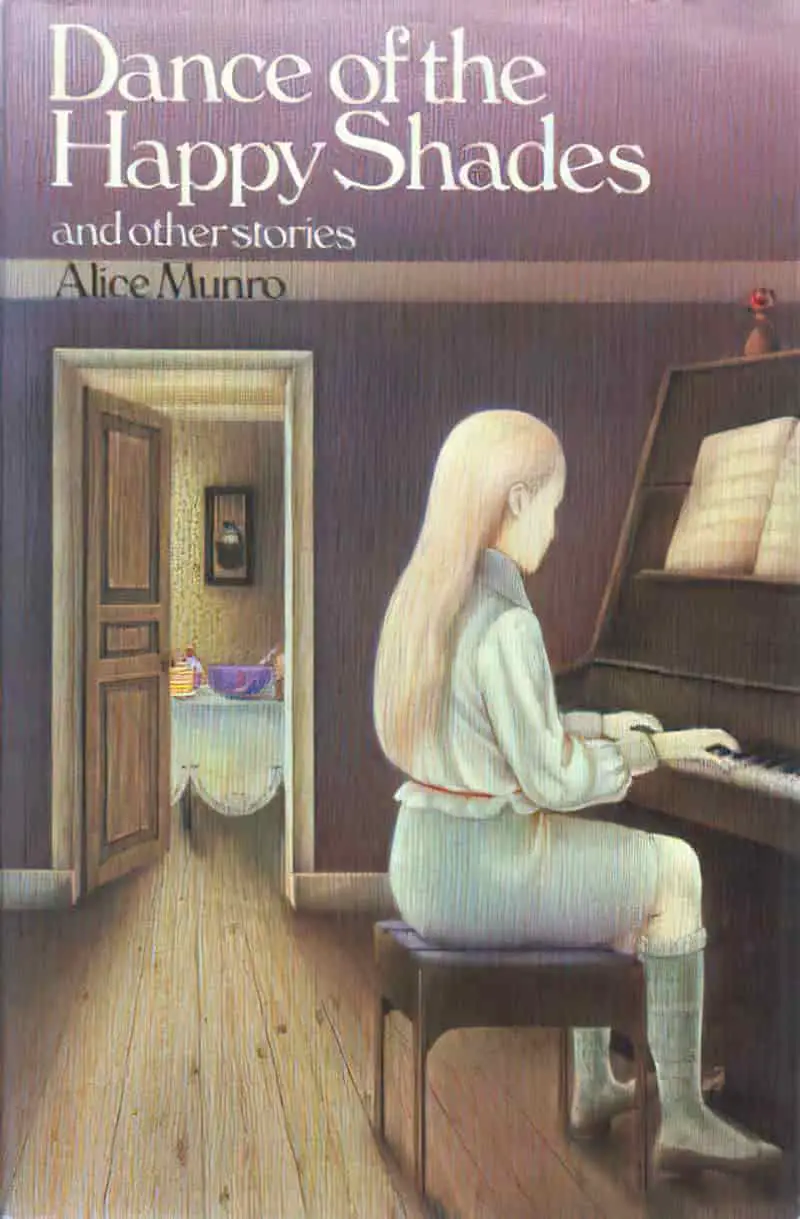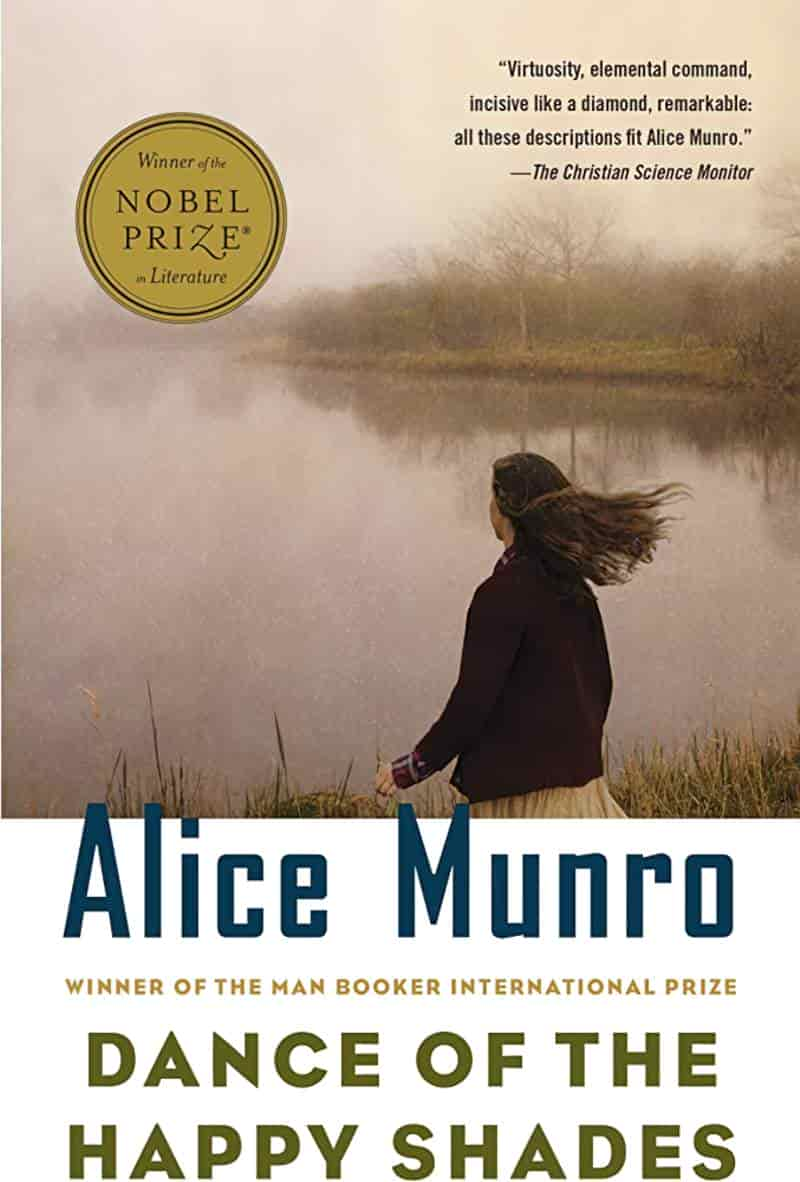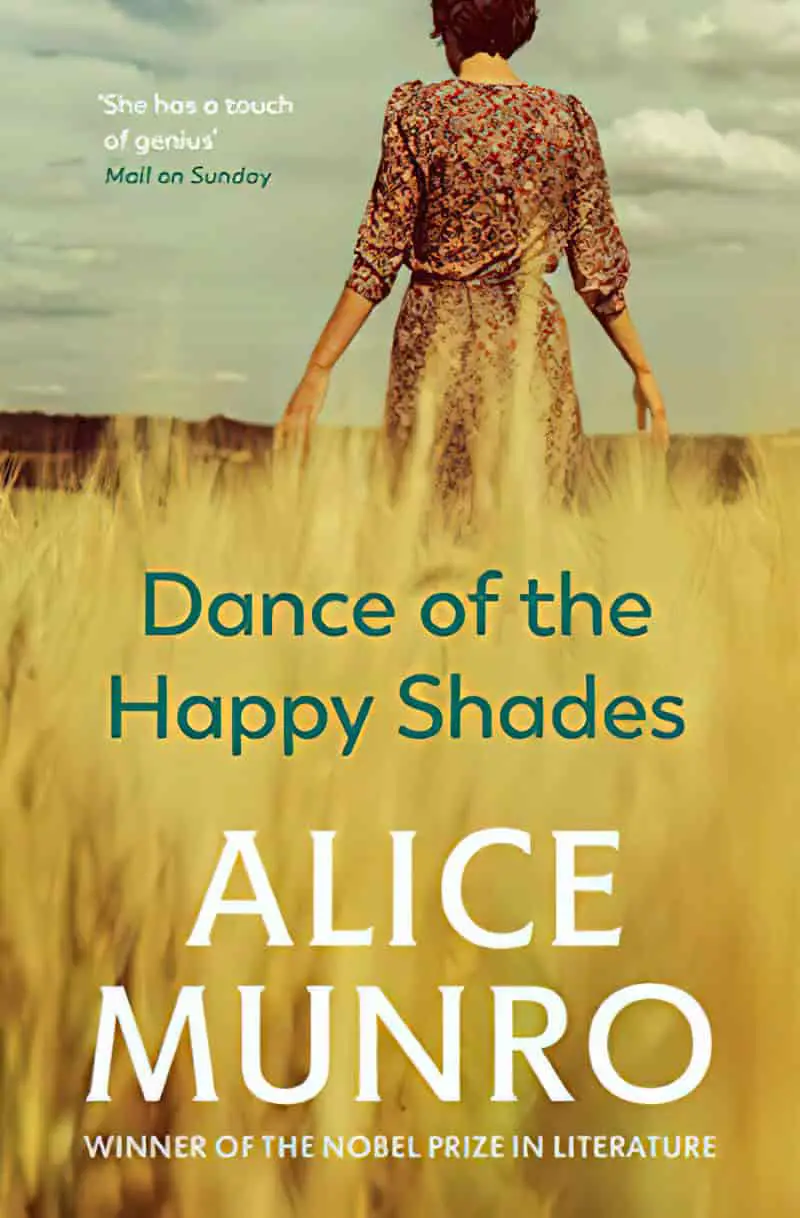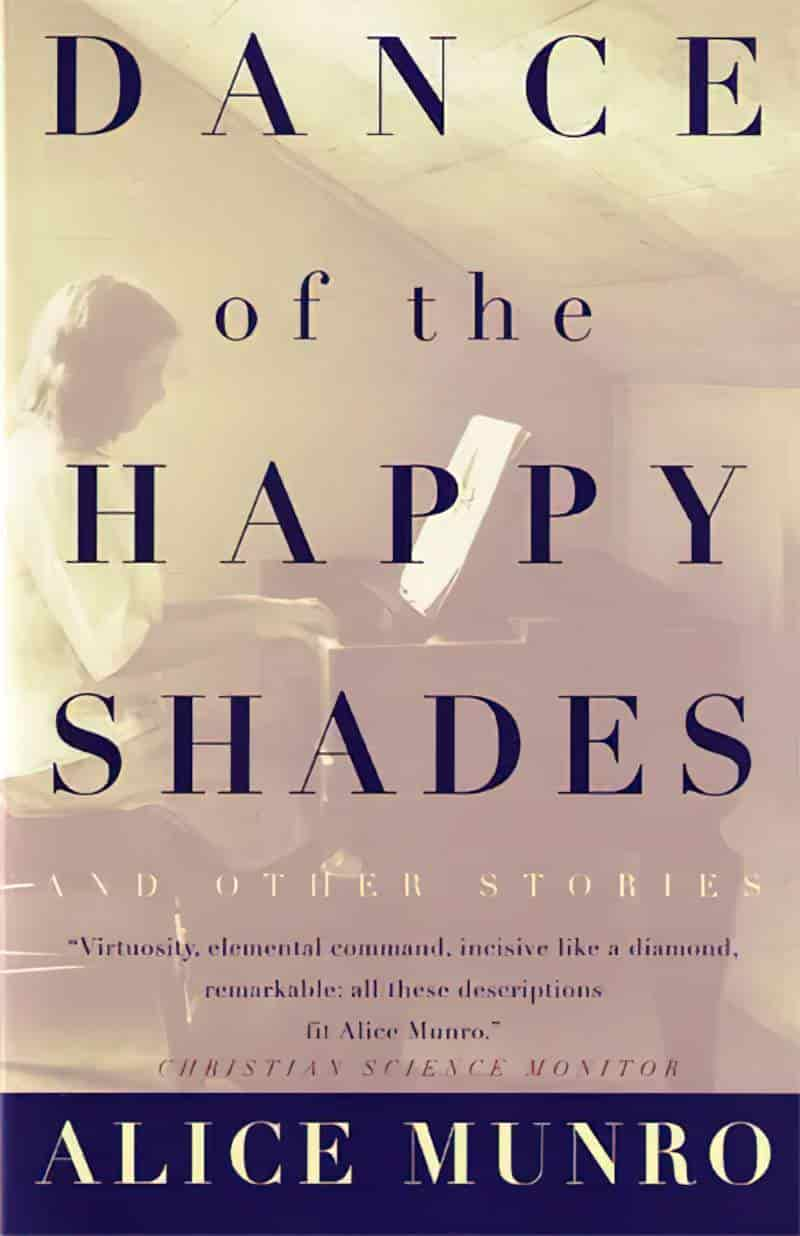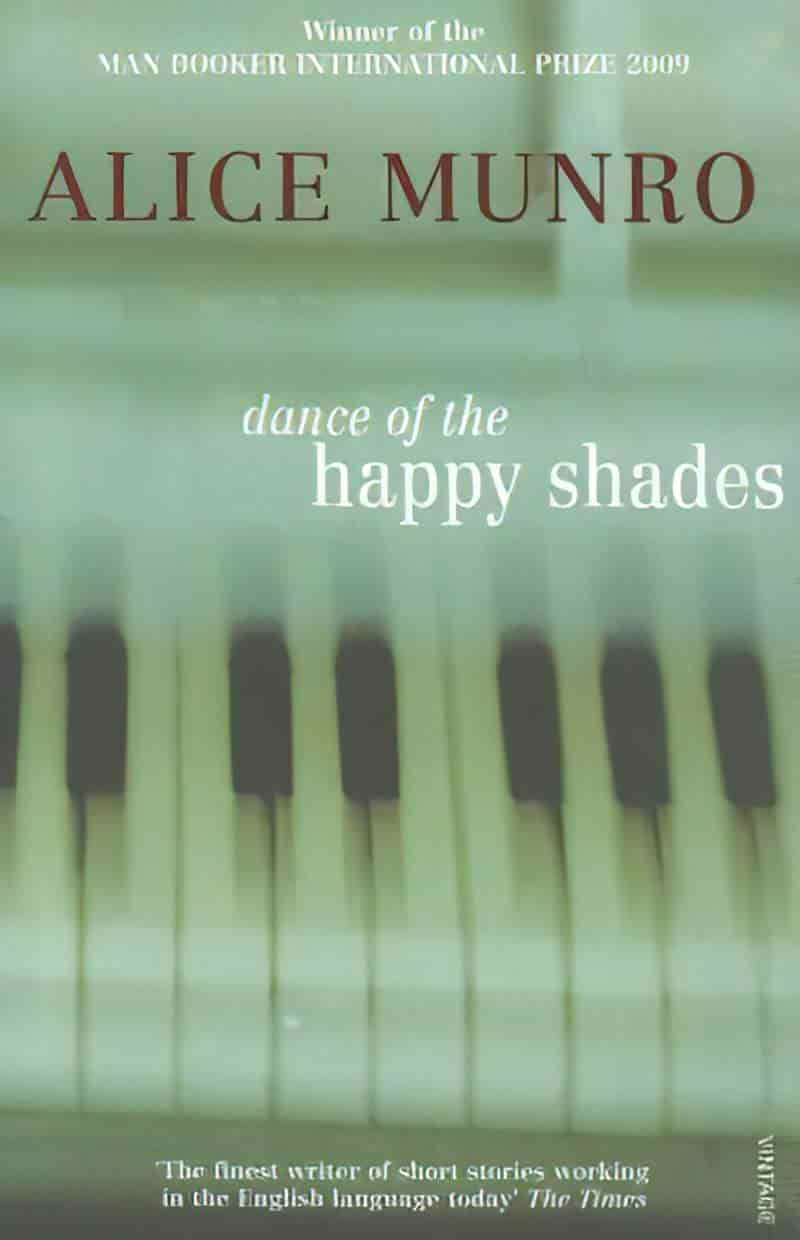**UPDATE LATE 2024**
After Alice Munro died, we learned about the real ‘open secrets’ (not so open to those of us not in the loop) which dominated the author’s life. We must now find a way to live with the reality that Munro’s work reads very differently after knowing certain decisions she made when faced with a moral dilemma.
For more information:
My stepfather sexually abused me when I was a child. My mother, Alice Munro, chose to stay with him from the Toronto Star
Before Alice Munro’s husband sexually abused his stepdaughter, he targeted another 9-year-old girl. ‘It was a textbook case of grooming’ from the Toronto Star
So, now what?
Various authors on CBC talk about what to do with the work of Alice Munro
And here is a brilliant, nuanced article by author Brandon Taylor at his Substack: what i’m doing about alice munro: why i hate art monster discourse
“The Peace of Utrecht” is a short story by Canadian author Alice Munro. The easiest place to find it: In Munro’s first short story collection Dance of the Happy Shades (1968). This story was actually published earlier, in 1960 (by a 1956-1982 Canadian literary magazine known as Tamarack Review).
THE MEANING OF THE TITLE
Alice Munro sometimes uses the name of a place in a story which, overtly, has nothing to do with that place. In this same collection, we’ve got a story about a trip to the coast. (Nobody goes to any coast.) Places, for Alice Munro’s characters, can by real and vivid in the mind, even if the story is not set there, the character never goes there… As is the case in “The Peace of Utrecht”.
No one in this story goes to Utrecht. Instead, the narrator will happen upon an old school assignment in her childhood bedroom titled “The Peace of Utrecht, 1913”.
UTRECHT, NETHERLANDS
Utrecht is a city in The Netherlands, home to the country’s largest university.
What does it mean? Might that have some symbolic significance?
ETYMOLOGY OF UTRECHT
The first syllable of the name Utrecht comes from an Old Dutch word for ‘outside’. The second syllable comes from a Latin phrase which means ‘Crossing-On-the-Rhine. (The ‘tr’ part is related to English ‘trans’, to cross.)
What about the ‘peace’ part of the title? Was there some war there? Yes!
UTRECHT IN THE MIDDLE AGES
You have to go back to the Middle Ages, to 1579. Utrecht was a fortified town, surrounded by a wall.
Long story short, The Union of Utrecht is considered the beginning of the Dutch Republic (which lasted until 1795). French invasions, tornadoes, the literal collapse of a significant cathedral… Then we get to 1713. Utrecht hosted one of the first ever international peace negotiations. The Treaty of Utrecht succeeded in settling a war.
Remember how Utrecht was a fortified town? Well now the walls came down. This allowed for expansion. The city grew. As happened all around the world, when a railway connected Utrecht to Amsterdam (in 1843) Utrecht really took off. Utrecht is now a main hub of the Dutch railway network.
UTRECHT AND WW2
How did Utrecht fare in WW2? That’s far more recent. Might Munro be alluding to a more recent historical event?
During WW2, Utrecht was held by German forces, right up unto German surrender. Ah! Now we get a Canadian connection. British and Canadian troops worked together. They surrounded the city of Utrecht and entered it after surrender (May 7, 1945). This explains why Helen would have written a high school paper on it. This is a significant war event for Canada.
MODERNDAY UTRECHT
Since then, the city has grown massively, joining up with nearby housing areas. As this collection of short stories was published, Utrecht was undergoing a massive building project. For example, the central railway station were developed in modernist style, and brutalist architecture. (Australia’s city of Melbourne is also a great city to visit if you’re into brutalist architecture, as the same thing was going on there.)
WHAT HAPPENS IN “THE PEACE OF UTRECHT”
SETTING
Summer. 1960s (going by the copper rinses and blue eyeshadow). Munro also mentions rubber corsets, a supposedly weight-reducing garment which was introduced in the early part of last century and saw a resurgence in popularity in the 1960s as fashion dictated an hourglass, hyper-feminine body shape.
Typically for Munro, this is small-town Southern Ontario. Alice Munro introduces readers to the town of Jubilee:
At half-past ten a bus goes through the town, not slowing much; we see it go by at the end of our street. It is the same bus I used to take when I came home from college, and I remember coming into Jubilee on some warm night, seeing the earth bare around the massive roots of the trees, the drinking fountain surrounded by little puddles of water on the main street, the soft scrawls of blue and red and orange light that said BILLIARDS and CAFE; feeling as I recognized these signs a queer kind of oppression and release, as I exchanged the whole holiday world of school, of friends and, later on, of love, for the dim world of continuing disaster, of home.
“The Peace of Utrecht” by Alice Munro
What a wonderfully evocative description of a town, and a young woman’s relationship to it. We’ll learn much more about Jubilee. If you read Munro’s The Lives of Girls and Women (1971), the interconnected narratives of that collection follow a character called Del Jordan who also lives in Jubilee.
Jubilee is not a real place, but rather a fictional small town in southern rural Ontario with similarities to Wingham, where Munro grew up, and to Clinton, where Alice Munro settled with her second husband. In Munro’s later collections, Who Do You Think You Are? and Open Secrets, this autobiographical town is now the very similar small towns of Hanratty and Carstairs.
HELEN: FIRST PERSON NARRATOR
Munro mixes up the structures of her stories, sometimes opening with a description of a place, sometimes saving description of place until the end. Sometimes she shows us scenes and invites us to come up with our own interpretation of the interpersonal dynamics before closing with a nuanced explanation via a narrator. In this case, though, she opens with the first person narrator’s interpretation of some complex interpersonal dynamics.
And now we will be shown what that fractured adult friendship looks like, between two women in their thirties.
Basically, a young woman has come ‘home’ (back to her small home town) from her adult life in Toronto to catch up with her sister. As the story opens, our narrator, Helen, whose name we don’t learn until near the end of the story, has been back in Jubilee for three weeks.
She didn’t make it home last winter because there was a once-per-decade blizzard. But she probably would not have come home anyway, to her mother’s funeral.
Maddy had told her to stay away.
MADDY
Maddy is the narrator’s sister, ‘well into her thirties’, so the older sister. We are told early on that Maddy ‘made the same journey’ (back to her childhood town) ‘four years earlier’. What this means is that Maddy made the journey back to Jubilee fourteen years ago, and hasn’t had the opportunity to leave it since.
The reason? Later we learn that the sisters struck a caregiving agreement when their mother was diagnosed with a degenerative disease (Parkinson’s?): They would each give each other four years away, presumably to get educated.
But Helen got married, so never came home. Then she had two children of her own. The implication is that both sisters struck a pact that they would would return to Jubilee and share the care of their mother. But the older sister was left to do the caregiving alone because Helen stayed in Toronto. She has spent the last decade alone, doing just that, to the best of her ability, which is never quite good enough when you’re caring for someone with serious chronic illness.
The frost between the sisters comes from the sacrifice made by Maddy, the lost opportunity to live a (so-called) ‘full’ life (which for women means husband and children), and the betrayal at having a sisterly pact broken.
THE IMPORTANCE OF THE NUMBER TWO
Alice Munro seldom breaks stories into parts, but this one is broken in two. We know she must have good reason to do this, and it has nothing to do with the reason why novels are broken into chapters (mostly to help readers navigate a long text across various reading sessions). So what’s the reason?
In a sense, Part One is set-up and Part Two is ‘the meat’ of the story.
Set up: Characters are introduced. We learn what each of them wants. We learn what each of them needs.
The meat: There’s some kind of showdown/battle, followed by a revelation, which in this case is followed by sad catharsis.
Significantly, this story is all about duos and dyads.
- Mother and daughter as dyad as this story is a dyad. (Dyad: something which consists of two elements or parts.)
- Two sisters, separated geographically, emotionally, then brought together (before parting again, we can deduce).
- A comment on the hoary old Good Daughter/Bad Daughter dichotomy (in which Munro illustrates the Good Daughter can never do enough, no matter what)
- Which is also a comment on the old Good Mother/Bad Mother dichotomy
- Women are always mothers, whether they mother their own child(ren) or their parents. (And even when neither of these holds true, woman and mother are synonymous in the cultural conception of womanhood.)
- Irony and paradox is at the heart of this story. The Big Irony: If Helen hadn’t separated from the mother years ago, she wouldn’t be in a position to guide her older sister through that process now. Of course, irony and paradox requires two parts in order to work.
- Alter-egos. There are two sets of alter-egos in “The Peace of Utrecht”. The first one reminds me of a scene from Thelma & Louise. Louise is waiting in the car while Thelma (unbeknownst to Louise) is committing her first armed robbery. While waiting for Thelma, Louise looks up and notices two elderly women looking back at her. The elderly women are alter-egos, which takes on more meaning for viewers later. In an example of delayed decoding, audiences understand that Louise might be looking at herself and Thelma as elderly women, except these two never get to be elderly women. In Alice Munro’s story, the sisterly alter-egos are the aunts.

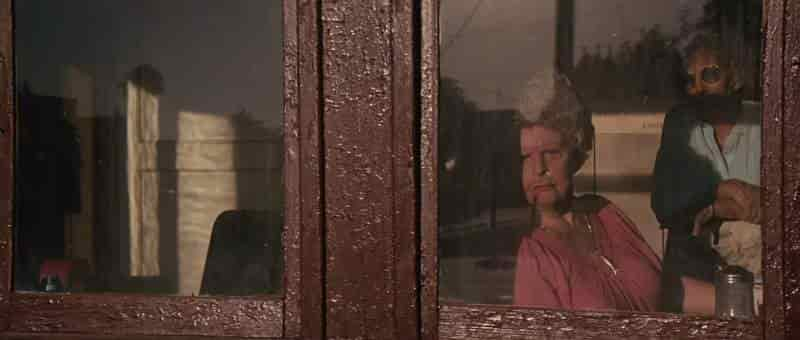
- Maddy and Helen are alter-egos of each other. When Helen looks at Maddy’s life, she sees exactly how her life would have panned out had she returned to Jubilee rather than remain in Toronto to build her own family. And vice versa.
- From the reader’s perspective, Maddy and Helen represents two separate sides of a single person—the side which craves separation, and the side which craves closeness.
PARTY AT THE LAKE
Since she’s been back to Jubliee, Helen has been to a party in the bay of Inverhuron, meeting Maddy’s new adult friends, who are more fashionable than Helen expected. She remembers her hometown as conservative, and since being away, I guess she forgot that even Jubilee might evolve with the times. She’d imagined her sister stuck in time, in a backwater. It’s good that Jubilee has also evolved, somewhat.
Helen wasn’t especially into the party, however. She was uncomfortably tiddly (not sober enough, not drunk enough) and wasn’t into the sexually charged game everyone else was playing. (She’s got a husband back home.)
SITTING ON THE FRONT STEPS
As the story opens she is sitting on the front steps of her childhood home with Maddy. The front veranda is a good place to sit and smoke in summer if you want to strike up conversation with passers-by.
They are regularly joined by a man called Fred.
FRED POWELL
Fred grew up in Jubilee but he was some years ahead of Helen and Maddie in school, which puts him in his early forties, probably.
Then he went away to the war, so Helen does not remember him from back then. Like Helen, he attended the lake party but wasn’t really into participating, instead looking out for people. (A sort-of Save the Cat introduction.)
This sympathetic introduction is necessary because conservative readers may soon have reason to pass judgement: He is spending his summer hanging out with Maddy (possibly having sex with her—Helen doesn’t know, but observes their playful, familiar banter), while Fred’s invalid wife is at the Lake for summer (institutionalised?). By Maddy’s description, Fred is very good to his wife.
Helen uses the metaphor of ‘mental cellophane’ to describe Fred. She had expected to come home and spend time alone with Maddy, but Maddy has invited Fred into the fold. Whatever memories the women shared are ‘safely preserved in anecdote’, and they take on a different hue when an outsider comes in. Fred serves as audience for recollections of their childhood anecdotes.
He has an affable masculine look of being diverted but unimpressed.
“The Peace of Utrecht” by Alice Munro
HELEN WRESTLES WITH GUILT
What does it mean to live a good life? All good stories about this, and Alice Munro returns to it frequently, especially in regards to romantic relationships, or lack thereof. “A Real Life” explores whether a 1930s woman really needs to get married to live a full life. In this earlier story, Alice Munro’s narrator wonders if it’s okay, actually, to not get married but to have a flirtatious relationship with a married man (who has his own caregiving responsibilities. The loveless (aromantic) community will no doubt appreciate the following sentence:
Unconsummated relationships depress outsiders perhaps more than anybody else.
“The Peace of Utrecht” by Alice Munro
Or is this simply Helen justifying her absence to herself, assuaging her own guilt for abdicating responsibility to her older sister?
All I can think about that, all I have ever been able to think, to comfort me, is that [my sister] may have been able and may even have chosen to live without time and in perfect imaginary freedom as children do, the future untampered with, all choices always possible.
“The Peace of Utrecht” by Alice Munro
THE PHENOMENOLOGY OF ILLNESS
“The Peace of Utrecht” encourages us to consider different types of pain. Later in the story, Helen will recall how she and her sister would try to reassure their ill mother that at least she didn’t feel pain, and adds, “that is true—if imprisonment is not pain”.
Phenomenology is the study of experience. (In contrast, ontology is the study of being.)
In order to feel wellbeing, people must have the body function sufficient to pursue their goals.
S.K. Toombs has listed five essential features of illness:
- Loss of wholeness
- Loss of certainty
- Loss of control
- Loss of freedom to act
- Loss of the familiar world
Toombs SK. The meaning of illness: a phenomenological approach to the patient–physician relationship. J Med Philos. 1987;12(3):219–240.
Who else, apart from the mother, experienced losses? Surely the caregiver also experiences numerous losses, right alongside the patient. Notably, in this story, Helen’s caregiver sister lost the freedom to act.
LOCKED OR SUSPENDED IN TIME
In the paragraph above, Alice Munro is also describing the difference between chronos and kairos, Greek words for two different ways of experiencing time. Chronos refers to chronological clock time, which drives and schedules our lives. Kairos is the mythical time, the time we experience when we are ‘living in the moment’, time as experienced by children, who have not yet learned to live by the clock. Kairos is also known as fairy tale time, taking place in a nowhere and no-time setting, representing the subconscious using the language of universal symbolism.
Might Maddy herself be able to recapitulate her long, endless, thankless decade of caregiving as a kind of freedom? It would help Helen to think so.
THE COMFORTS OF RELIGION
Helen suggests things might be easier if Maddy were religious. But she acknowledges that to call Maddy ‘religious’ is too neat and tidy, for she’s not that religious at all. Note with interest that Alice Munro also touches on the uncomfortable ambivalence of being ‘little bit religious’ in another story of the same collection: “The Time of Death”. To be somewhat religious is harder than being very religious, or not at all. This story shows how the phenomenon applies to outsiders looking in at you, too. It would be easier for a sister to assuage her own dereliction of filial duty if she could believe her fully pious caregiving sister had at least got something out of her caregiving role in the belief that it would buy a ticket to heaven, or given her social capital within the local church, or whatever.
FLASHBACK TO ARRIVING AT THE EMPTY HOUSE WITH HER DAUGHTER
After driving all the way from Toronto, Helen had pulled up outside her dead mother’s (and working sister’s) house with her two young children (a daughter and toddler-aged son) and was shocked at the utter emptiness of it.
(For more on that, see: Describe the Outside of a House)
Once inside, she looks in the hall mirror and sees a picture of herself which, last time she looked, was young and ‘commonplace pretty’. Now she is a stressed-out Young Mother (capitalisation Munro’s). There’s nothing to distinguish her from many, many other young mothers just like her.
She is hit with a shock of grief as she anticipates her mother calling out, “Who’s there?” and doesn’t hear it, because of course her mother is dead.
WHAT IT WAS LIKE TO BE AROUND THE TERMINALLY ILL MOTHER
AUTOBIOGRAPHICAL LINK
“The Peace of Utrecht” was the story where I first tackled personal material. It was the first story I absolutely had to write and wasn’t writing to see if I could write that kind of a story. I think every young writer starts out this way, where at first the stories are exercises. They’re necessary exercises, and I don’t mean they aren’t felt and imagined as well as you can do them. But when a story takes over the way that one did with me, then you see, then I saw that writing was about something else altogether than I had suspected it was, that it was going to be less in my control and more inescapable than I had thought. Up until that time, it was probably “I will be a writer” [laughter]; and after that, “Some things have to be written by me.”
Alice Munro Everlasting, Struthers, 21
Written as only someone who has experienced caregiving responsibilities could do, Alice Munro describes the ups and (mostly) downs of caring for a mother with a degenerative disease.
Munro has said that she found this story very difficult to write. In fact, an earlier draft put some space between author and characters by inserting a neighbour narrator called Ruth. This character Ruth had known the family for many years, hence her insight. But in the end, this can’t have been a close enough narrative viewpoint, because Ruth was cut out. Alice Munro eventually found the bravery to write directly from one of the daughters’ point of view. There’s this idea that someone removed from a situation is the more objective party, but I’d encourage great caution with that assumption. (There are heavy, real-world political ramifications, too: Women are not trusted to talk about women’s issues; rape victims are not trusted to be on juries where rape is accused; Autistic people are not invited into medical panels discussing autism; trans people are thought to be too ‘biased’ when talking about trans affirming care and so on and so forth.)
There is nothing either Helen or Maddy can do to help the mother on her darkest days. As a consequence, the sisters withdraw their emotions from her. The mother does illogical things, such as bringing in a dressmaker for a new dress, when she won’t be going anywhere to wear it. No one is able to tell the dressmaker what kind of dress she wants. Everything is embarrassing and awkward. Helen thinks of her mother as Gothic, conjuring the grotesque which accompanies old age.
The mother’s wish for a new dress makes no sense at a logical level, but does make sense at an emotional level. The mother wants to remind herself that she still has life in her yet. She would like the fantasy of leaving the house, wearing the sort of dress she has always wanted but never had.
This part of the story is deeply sad. And perhaps hints at some trauma experienced by the mother, be it the trauma of deprivation or that combined with something else. (Can you see other evidence of trauma?)
Meanwhile, Helen ‘felt the beginnings of a secret, guilty estrangement’.
THE SIGNIFICANCE OF THE TITLE BECOMES CLEARER
In her childhood bedroom, where her two young children are currently sleeping, Helen happens upon the old school project about The Peace of Utrecht. She sees it’s written in her own handwriting, yet has no recollection of having written it.
Surely most of us have a similar experience, rooting around in a box of old things. Many things bring back memories, but you’ll usually find something you know to be yours, yet you have no recollection of ever having. Similarly this happens when you keep a diary. If you flip back to entries from decades ago, some entries will recall the events described. Other entries will baffle you. Why do you have no recollection of that event or that person whatsoever? What made some memories stick others dissipate into thin air?
This feeling of dissonance, of not seeing yourself, is compared (by proximity) to the feeling in the paragraph before, in which Helen has ‘felt the beginnings of a secret, guilty estrangement’. She is estranged from her younger self as she became estranged from her mother.
To become estranged from your mother is to become estranged with your younger self. My mother, myself.
The following decade, Nancy Friday wrote an entire book about that, which resonated with Western women and became a bestseller. Alice Munro was on the vanguard when it came to thinking about mothers, daughters and how 20th century women might separate from each other and lead a good life.
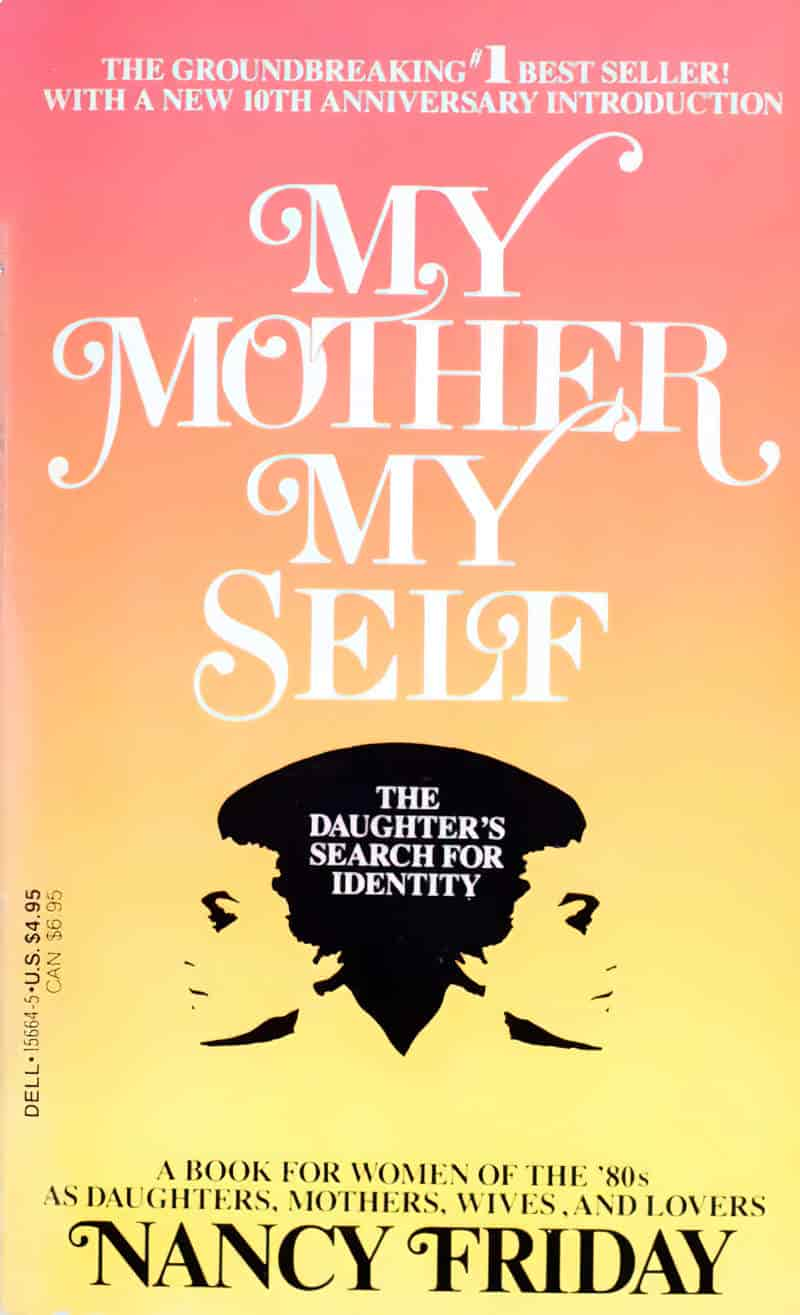
MY MOTHER, MYSELF BY NANCY FRIDAY (1977)
When Nancy Friday began her research for My Mother/My Self in the early 1970s, no work existed that explored the unique interaction between mother and daughter. Today psychotherapists throughout the world acknowledge that if women are to be able to love without possessing, to find work that fulfills them, and to discover their full sexuality, they must first acknowledge their identity as separate from their mother’s. Nancy Friday’s book played a major role in that acceptance. The greatest gift a good mother can give remains unquestioning love planted deep in the first year of life, so deep and unassailable that the tiny child grown to womanhood is never held back by the fear of losing that love, no matter what her own choice in love, sexuality, or work may be.
So that partly explains the title. The title (and the historical event) also mark the end of something: a cold war (standoff) between Helen and Maddy. If the sister is now allowed to get on with her life as an independent adult, this will perhaps improve the relationship between the siblings.
Dragos Zetu refers to another seminal work (also by an author called Nancy) in contributing to the conversation about mothers and daughters in psychology.
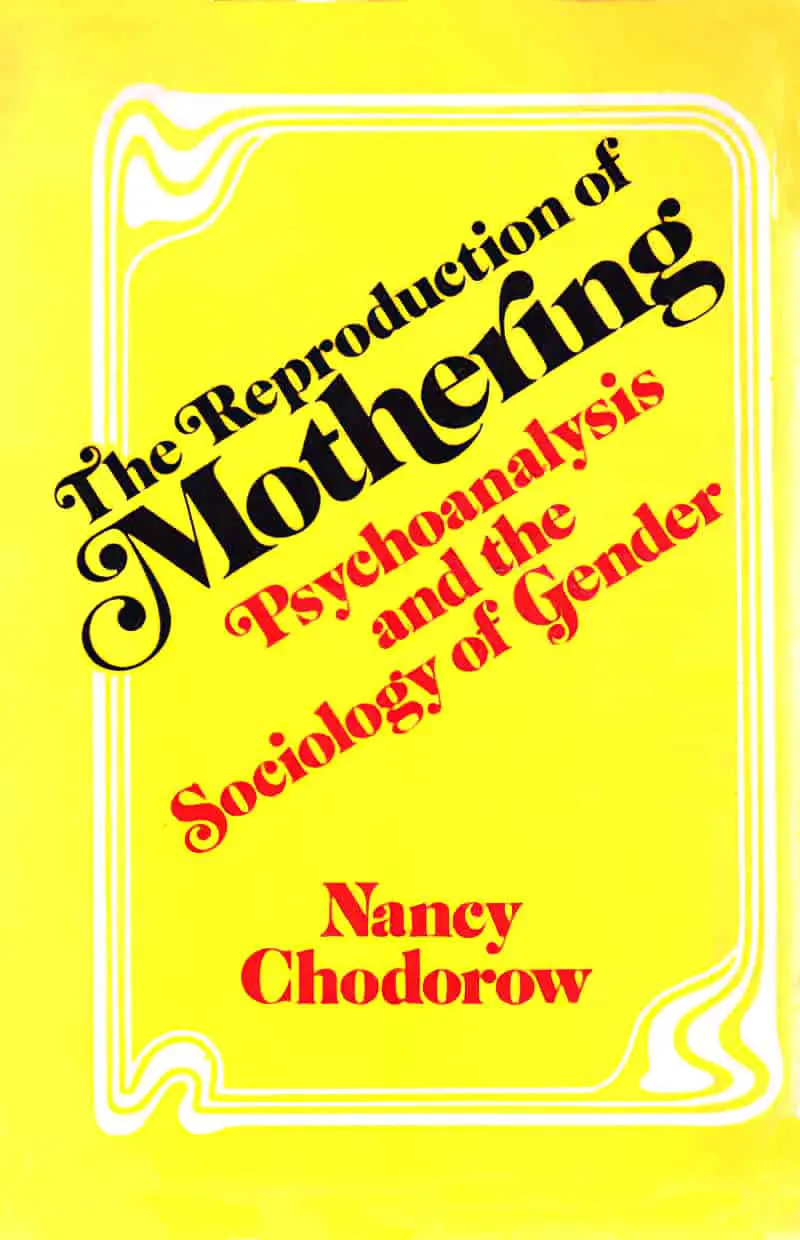
THE REPRODUCTION OF MOTHERING BY NANCY CHODOROW (1978)
When this best-seller was published, it put the mother-daughter relationship and female psychology on the map. The Reproduction of Mothering was chosen by Contemporary Sociology as one of the ten most influential books of the past twenty-five years. With a new preface by the author, this updated edition is testament to the formative effect that Nancy Chodorow’s work continues to exert on psychoanalysis, social science, and the humanities.
marketing copy
This is a work of feminist psychanalysis.
NANCY CHODOROW’S MAIN IDEAS
- Daughters must confront their entanglements with their natal families before they can fully develop commitments outside the family.
- Whereas boys are able to quite easily extricate themselves from their mothers (the whole culture supports this process), for daughters the process is far more complicated. Girls and women are expected to provide care.
- The main task of a girl’s teenage years is to separate herself from her mother. (An earlier and influential child psychologist called Peter Blos had observed the same thing.)
- When mothers have teenage and young adult daughters, they are pulled in two ways. One the one hand mothers want to encourage their daughters’ independence, but they also want to keep them close. This is a cause of conflict.
Deborah Tannen has also written about the mother and daughter relationship in similar ways, but from the perspective of a linguist. Mothers will ask their daughters, “Are you really wearing that?” because they don’t see their daughters as fully separate individuals.
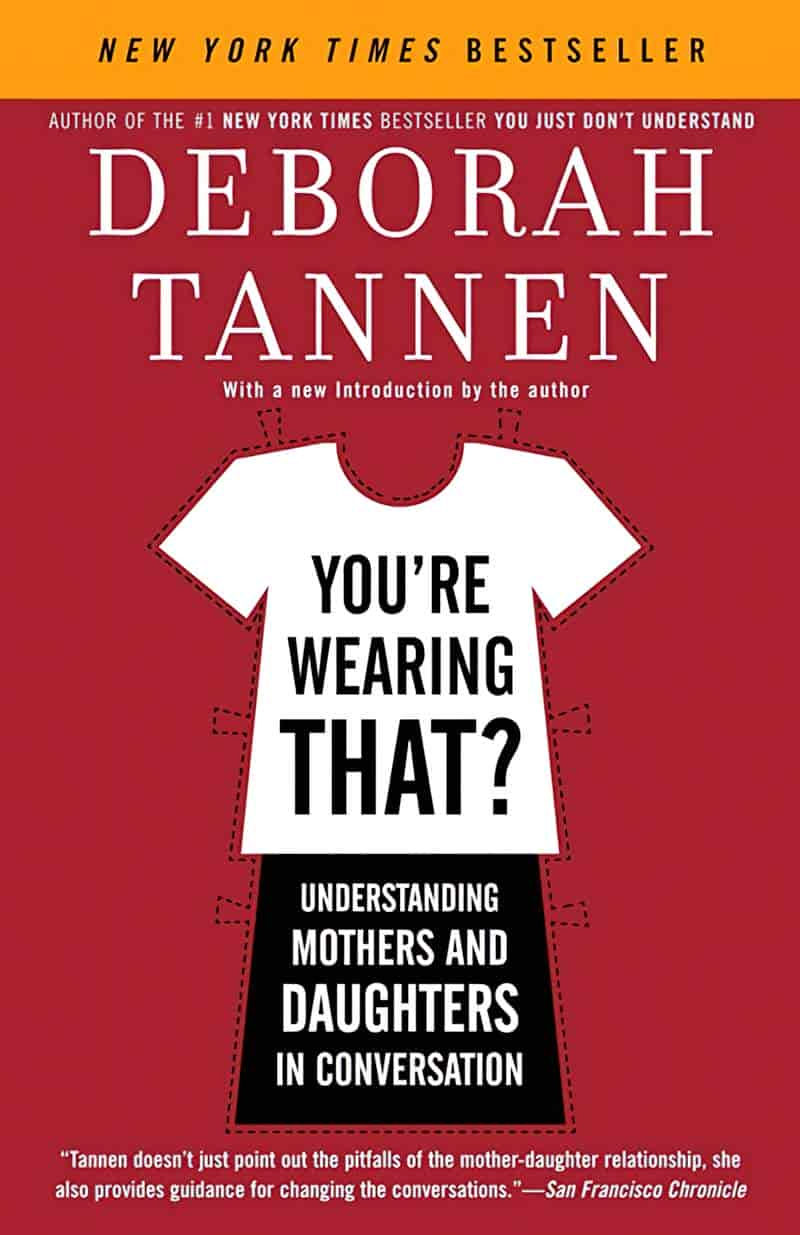
Deborah Tannen’s #1 New York Times bestseller You Just Don’t Understand revolutionized communication between women and men. Now, in her most provocative and engaging book to date, she takes on what is potentially the most fraught and passionate connection of women’s lives: the mother-daughter relationship.
It was Tannen who first showed us that men and women speak different languages. Mothers and daughters speak the same language–but still often misunderstand each other, as they struggle to find the right balance between closeness and independence. Both mothers and daughters want to be seen for who they are, but tend to see the other as falling short of who she should be. Each overestimates the other’s power and underestimates her own.
Why do daughters complain that their mothers always criticize, while mothers feel hurt that their daughters shut them out? Why do mothers and daughters critique each other on the Big Three–hair, clothes, and weight–while longing for approval and understanding? And why do they scrutinize each other for reflections of themselves?
Deborah Tannen answers these and many other questions as she explains why a remark that would be harmless coming from anyone else can cause an explosion when it comes from your mother or your daughter.
(Listen to Deborah Tannen speak about this topic at the Hidden Brain podcast, or at the Mom Enough podcast.)
DEVELOPMENTAL PSYCHOLOGY
According to 20th century thought, girls go through the following stages in relationship with their mothers:
- Symbiosis
- Separation
- Individuation
In science, symbiosis means ‘a close relationship’. There are four main kinds of symbiosis, one of which is mutualism.
In everyday English, when people talk about ‘a symbiotic relationship’ we are most often talking about mutualism, or ‘a mutual relationship’. ‘Mutually symbiotic relationship’ would be technically more accurate.
Apart from mutualism, three other types of symbiosis are:
- Commensalism, in which one species benefits while the other remains unaffected
- Parasitism, in which one species benefits while the other is harmed
- Neutralism, in which both species are unaffected
In remaining tied to her mother, Maddy remains in a symbiotic relationship with her mother. If we were talking about the rest of the animal kingdom and not human psychology, might we call this kind of symbiosis parasitic? That would be too simplistic. The mother is also a victim of the wraparound caregiving forced upon her by her daughters. The daughters are embarrassed of their mother. Why not just let her have her favourite dress, even if she has nowhere to wear it? Why not let the mother speak, even though visitors find the mother difficult to understand and hard to look at? (Easier said as an outsider, of course. Smalltown reputations are hard-won and once lost, lost forever.)
OUR GOTHIC MOTHER
Helen uses the term “Gothic Mother”. What’s that about? The mother lived in a bedroom upstairs, which conjures imagery related to The Mad Woman In The Attic trope. The most famous example: Charlotte Brontë’s 1847 novel Jane Eyre. The woman upstairs is, of course, being severely abused. So when Helen calls her mother ‘Gothic’, she is referring to her own role in any abuse as much as she is distancing herself from her mother in an almost derogatory way.
Back to psychology, and those three stages of mother-daughter relationships. Unlike Maddy, who returned to Jubilee so her younger sister could go to university, Helen frees herself from her mother (separates) and starts her own family (individuation).
The girls in this story were required to take care of their mother from an early age. This is known as parentification of the child.
The word parentification was coined by the Hungarian-American psychiatrist Ivan Boszormenyi-Nagy, one of the founders of the field of family therapy. The word describes what happens when the roles of parent and child are reversed. Consequently, this role reversal disrupts the natural process of child development. In most cases, it has far-reaching negative effects on the child’s mental and physical health.
What Is Parentification? Signs of a Parentified Child
REMEMBERING CHILDHOOD
As always happens if you return as an adult to your childhood home after a long absence, everything in the house reminds you of earlier times. Helen recalls high school (the building now pulled down). She remembers the clothes she and her sister would wear. She remembers her mother before she was sick.
Or is this what she’s talking about? Alice Munro positions this remembered (italicised) conversation so that the pair them might just as easily be talking about if they remember anything before the war.
I read and re-read this several times trying to get it straight: were the sisters talking about before the war, or before their mother got ill? I can’t decide either way, and have concluded that Alice Munro must have intended me to think of both. For these sisters, dealing with a private family illness is a kind of war. There are no accolades, no medals, no greater purpose, no hated opponent. But caregiving is its own kind of sacrifice.
PART TWO
Aunt Annie and Aunt Lou were briefly mentioned in part one—the two spinsters of the extended family. Now Helen tells us she has been to visit them three times since returning to Jubilee. My immediate thought: She’s trying to assuage her own bad feelings about her spinster sister. (In the 1960s, late-thirties and unmarried for a woman assumed she would remain unmarried for life.) If Annie and Lou are happy, she doesn’t need to worry so much about her sister’s lost decade, in which her partnership forming years were filled up with mother duty.
Of course, Alice Munro doesn’t give me what I want, or rather what I want for Helen.
Instead, the third visit draws her into what she’s tried to resist all along: Images of her mother in her final three weeks, imprisoned in the hospital against her will. The stories she has been telling herself (that ‘it was her time’) are contradicted by the elderly relative, herself more knowledgeable about death and old-age, as we are reminded by her ‘grotesque’ lack of hair underneath the cap usually worn by much younger women. This character is both old and young at once, as all old people are, carrying their younger selves alongside their current, older selves. This is a recurring theme in Alice Munro’s work, and is partly the reason why I didn’t get much out of Alice Munro’s stories myself until I was old enough to experience this phenomenon firsthand.
Is this the last function of old women, beyond making rag rugs and giving us five-dollar bills—making sure the haunts we have contracted for are with us, not one gone without?
“The Peace of Utrecht” by Alice Munro
THE ENDING
At home, Maddy is making salad in the kitchen. Helen has learned from the aunts that the last three weeks of their mother’s life weren’t great, and so she tells Maddy she is forgiven; she did nothing wrong.
Maddy insists she doesn’t need to be told, but then immediately starts shaking and drops a pink, cut-glass bowl of raspberries (exactly the sort of thing you’d find in an elderly woman’s house of the era).
“Take your life, Maddie. Take it.”
“Yes I will,” Maddy said. “Yes I will.”
“Go away, don’t stay here.”
“Yes I will.”
“The Peace of Utrecht” by Alice Munro
It’s tempting to go with the most easily accessed symbolism at this point, i.e.: The shattered glass bowl means that Maddy is now free of her guilt, ready to get on with her own life. The mother is dead, the sister forgives her.
But Alice Munro is far more subtle than that. There’s way more to it. Scholar Magdalene Redekop can help us out with this one. Redekop has said that the bowl more likely represents Maddy’s true self. She has been hiding her true self behind her role as caregiver (“surrogate mother”) to her own mother, caught in a cycle of symbiosis and mothering.
If we go with that reading of the bowl symbolism, this means the mother, though dead, is still controlling Maddy’s life. She’s having real trouble breaking free. When she tells Helen she’s got “a whole shelf of glass bowls”, we might understand this to mean that she has many other selves, which again, might be taken as a good thing, but could also mean that none of them is real. She hasn’t had the chance to get a real life. (Alice Munro explores the meaning of “a real life” in a later story. Uh, it’s called “A Real Life“.)
The glass of the bowl is significant, because of its ties to invisibility. As a caregiver to an elderly woman, rather than as a mother, Maddy has been invisibilised by society. What else can’t be seen? The ‘invisible umbilical cord’ of Maddy’s tie to her mother.
take someone’s life
1. Kill someone, as in They argued about invoking the death penalty for taking someone’s life. [c. 1300]
2. take one’s own life. Commit suicide, as in Most churches have long opposed taking one’s own life. [First half of 1900s]
3. take one’s life in one’s hands. Take a serious risk, as in Climbing without oxygen is really taking your life in your hands.
In Munro’s story, the phrase “Take your life” is one of those phrases which means one thing and also its opposite. To ‘take your life’ is a euphemistic way of referring to suicide—ending it—but here, in this context, it means “reclaim your life, it’s yours”. (Words which behave like this are called contranyms, so lets call this a contronymic phrase.) Note that a word with two opposite meanings is fully in line with the motif of doubles which runs throughout this story, manifesting at all different levels of the narrative.
The final sentence of dialogue is more perplexing. When Maddy says, “But why can’t I, Helen? Why can’t I?” what is the antecedent? The sisters share a truncated language and Helen would know exactly what she means.
In some ways, Maddy would love to leave this little town, but she’s built a life here now. She’s embedded. Also, she’s probably waiting around for her man-friend to become single. Her job is here, her adult-made friendships are here. Her subconscious may want to smash everything in the house, start anew, but she’s past that. Youth is gone. Along with it, opportunity.
As Nancy Chodorow wrote, daughters must confront their entanglements with their natal families before they can fully develop commitments outside the family. Maddy was unable to do that, and so this is a story of entrapment.
But the sisters come together, because of two morbid things in common.
- Maddy now knows what Helen understood ten years ago: How it feels to move from the position of caregiver to the freedom of individuation. Younger sister will now guide the older sister through the process.
- The sisters are both seen as Bad Daughters. Helen is the clearcut Bad Daughter for leaving entirely. But the elderly aunt who takes Helen upstairs believes that if Maddy hadn’t put the mother in hospital, the old woman would never have died. So they’ve been heaping guilt on Maddy.
ALICE MUNRO’S FICTIONAL CAREGIVERS
- “The Peace of Utrecht”
- “Images“
- “Memorial”
- “The Ottawa Valley”
- “Winter Wind”
- “Spelling”
- “Friend of My Youth”
- “Wigtime“
- “Accident”
- “Chaddleleys and Flemings: Connection”
- “Family Furnishings”
- “Soon”
- “The Ticket”
FURTHER READING
Here in Australia, “Sarah Holland-Batt has won the $60,000 Stella Prize for her intimate and affecting poetry collection The Jaguar, about her relationship with her late father, who suffered from Parkinson’s disease.”
OTHER STORIES IN DANCE OF THE HAPPY SHADES (1968)
- “Walker Brothers Cowboy” — A woman looks back at her 1930s childhood. Her family has 2 or 3 months earlier lost the family fox farm and moved to a small town on the edge of Lake Huron, where the father has started a new job as a door-to-door salesman. Meanwhile, the mother sinks into a depressive state. One day, the father takes the narrator and her younger brother on a ride, where he visits an old friend/lover. The daughter learns that her father had another sort of life once.
- “The Shining Houses” — In a new neighbourhood, many houses have been built next to an old one. The owner of the older house, Mrs. Fullerton, does not take care of her property to the extent that the owners of the new houses would like. They conspire to get rid of the old poultry-farming witch. Only our narrator seems conflicted.
- “Images” — A little girl is the narrator of this double character study: A second cousin who came to take care of the household while her own mother was sick, and a man with a psychotic mental illness who lived alone in the woods. After meeting the man in the woods, the little girl learns not to be afraid of the woman who has infiltrated the household to take care of them all.
- “Thanks for the Ride” — This story is written with the viewpoint character of a young man. He has just finished school and is out with his older cousin with the purpose of losing his virginity. Together they pick up some ‘loose’ girls. The whole experience is perfunctory and defamiliarizing.
- “The Office” — A housewife decides to improve her life by carving out some time for herself to pursue her passion of writing. So she rents a room above a hair salon and drugstore. But the landlord won’t leave her in peace, deeming her time his.
- “An Ounce of Cure” — A young teenager is pining after a boy who dumped her months ago for another girl. She can barely think of anything else. One night she is babysitting when she spies three bottles of liquor on the bench. She accidentally gets very drunk and very caught out. Her reputation is ruined. But as an older woman looking back on this time, she is glad it happened.
- “The Time of Death” — A mother who lives in one of the squalid cottages on the edge of town has lost a child in a terrible accident. The village gathers round, but how genuine are they in their grief?
- “Day of the Butterfly” — Two girls at a primary school are ostracised. One is the narrator, now grown, ostracised for being an out-of-towner who doesn’t wear the right clothes. The other is more ostracised still, because her parents are immigrants, because she smells like rotting fruit, and because her brother needs her to accompany him to the toilet. When this girl is dying in hospital from child leukemia, the young narrator is filled with inexplicable grief. It is now too late to be a real friend to this outcast, and anything she does in kindness will feel empty and pointless.
- “Boys and Girls” — An outdoorsy farm girl loves helping her father on the fox farm but realises she’ll very soon be required to go indoors to help her mother with domestic work. In contrast, her younger brother, far less conscientious, will be allowed to stay outside and work with the animals, enfolded and welcomed into the masculine world.
- “Postcard” — A woman around the age of 30 has been seeing a man for years. They’re long-term partners. The reason they haven’t married: He’s waiting for his mother to die. His mother wouldn’t approve of him marrying the narrator, we deduce because of the wealth disparity. Unfortunately for the narrator (Helen), turns out the guy never intended to marry her anyway. He sends her a postcard from Florida telling her how he’s having such a good time. Next minute, Helen’s best friend is round to break the bad news: It’s been published in the paper, the lover is getting married to someone else after all this time. The weasel didn’t have the gumption to let Helen know. So she goes round to his house, stands outside and expresses her grief in a very vocal way.
- “Red Dress—1946” — A thirteen-year-old girl’s first ball. Her mother sews a red dress with a princess neckline. Suddenly she looks much older. She barely recognises herself in the mirror, and longs for childhood again. Almost all the girls around her are obsessively interested in boys. Everyone, that is, except one other girl who says she despises boys, and plans to support herself by working as a P.E. teacher. But by aligning herself with this queer girl, our thirteen-year-old risks much. What will she do? Will she take up the offer of friendship?
- “Sunday Afternoon” — Seventeen-year-old Alva has recently finished high school and started working as a maid for the mega-wealthy Gannetts. Today they are hosting a party at their mansion and Alva must navigate a delicate social situation: They want her to feel part of the family, but what does that mean, exactly, when you’re actually the paid help? Alva must also navigate the men who enter the house, several of whom express sexual interest in her. This isn’t your run-of-the-mill, predictable young-woman-is-seduced storyline, but Alice Munro keeps readers in audience superior position as we watch with bated breath what happens to Alva in this big, lonely island of a house. We’re left to deduce most of it.
- “A Trip to the Coast” — An eleven-year-old girl called May lives with her mother and grandmother (mostly her grandmother) in a general store in a three-house township. There’s nothing to do in this one horse town. But today she’s looking forward to same-age company. However, the “company” is a total let-down, and so her grandmother, for the first time ever, suggests the two of them take a trip to the coast. But then another visitor comes. A customer who declares himself an amateur hypnotist. This story ends on a cliff hanger, and I don’t believe Munro has given us enough of a symbolic layer to fill in the gaps for ourselves. I believe we’re supposed to feel exactly as unmoored as eleven-year-old May, waiting out front of the store in the rain.
- “The Peace of Utrecht“
- “Dance of the Happy Shades” — An emotionally astute and very observant adolescent girl is required to accompany her mother to an embarrassing recital with the elderly, unfortunate-looking spinster teacher whose spinster sister is recently bedridden due to a stroke. The story is told via the slightly baffled viewpoint of the girl, who is required to recite a tune on the piano at these excruciating annual events.
